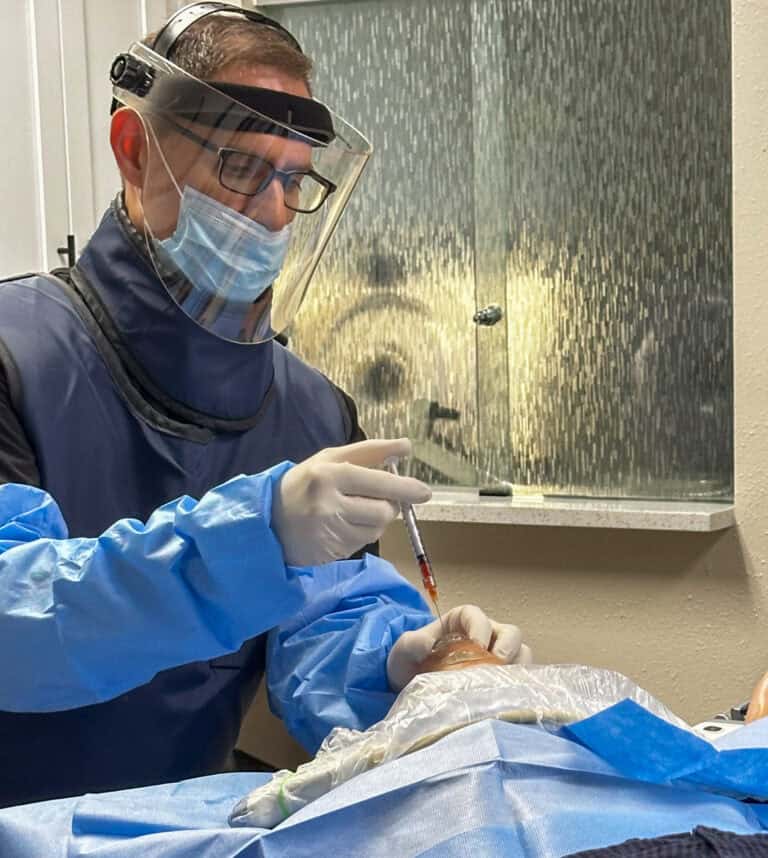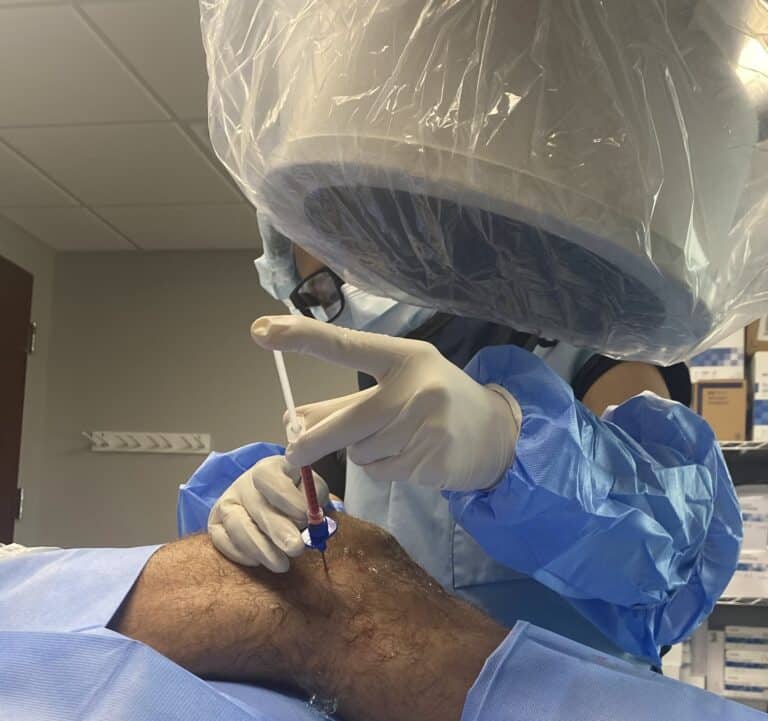Are you experiencing tingling and numbness in your fingers and hands? Do you feel pain or weakness in your wrists or hands? Have you felt the sensation of a “shock” feeling shooting from your wrist to your arm? If your answer is “yes,” you may be suffering from carpal tunnel syndrome (CTS). CTS occurs in people of all ages, and most commonly affects those over 30.
If you have questions about carpal tunnel syndrome, the Regenexx at New Regeneration Orthopedics team has answers–and some exciting new treatment options.
What Is Carpal Tunnel Syndrome?
Carpal tunnel syndrome is a disorder that causes compression or damage to the median nerve in your arm, which leads to pain and numbness as well as sensations of tingling or electric shock in your fingers, hands, and up to your wrist and arm. These symptoms can become worse with repetitive movement, or at night while trying to sleep.
CTS happens when the median nerve, which is one of the major nerves within your arm, gets compressed while navigating through the carpal tunnel. The compression can happen via the transcarpal ligament or any of the various flexor tendons that also travel through your wrist.
What are the Risk Factors of Carpal Tunnel Syndrome (CTS)?
There are certain conditions that predispose people to issues with the tendons in their wrist swelling up and limiting space for the median nerve. CTS tends to be more prevalent in people who also experience:
- Diabetes
- Pregnancy
- Hypothyroidism
- Rheumatoid Arthritis
- History of Wrist Trauma
How is CTS Diagnosed and Treated?
Your physician will often perform several physical exam tactics that may prove positive in patients suffering with CTS, even though they offer less sensitivity. CTS treatments can include:
- Bracing
- NSAIDs
- Stretching
- Steroid Injections
- Platelet Injections
- Behavioral modification
However, if symptoms linger, surgery is often suggested which consists of cutting off the affected ligament to give the nerve more space.
What Types Of Tests Are Performed And Are They Painful?
There are also many diagnostic tests configured to find evidence of carpal tunnel syndrome, with the most commonly performed diagnostic test being:
1. Nerve Conduction Study and Electromyography — This study consists of electrodes that are placed alongside the path of various nerves in the wrist and hand. A pulse of electrical stimulation is dispatched through the various nerves in an effort to measure the speed of the signal along each nerve. This test is performed to decipher the extent of median nerve damage, if any, compared to the other nerves, as well as the location of the damage.
The procedure is often followed up by placing a needle that works as a microphone into numerous muscles of the hand and arm to evaluate the ‘nerve to muscle’ link, and is considered an excellent tool for diagnosing carpal tunnel syndrome. Unfortunately, this test is oftentimes rather uncomfortable and painful.
2. Diagnostic Ultrasound — With the use of a musculoskeletal ultrasound machine, physicians can measure the cross-sectional area of the median nerve at the carpal tunnel. These measurements will quickly reveal if the patient has objective evidence of carpal tunnel syndrome. Compared with the nerve conduction study method, ultrasound is less expensive, quicker and painless.
Carpal Tunnel Release Surgery
Carpal Tunnel Release (CTR) surgery relieves the pressure on your median nerve by cutting the transverse carpal ligament. Although traditional CTR procedures can rectify the condition, the result is often a large scar. There are times when the scars may be painful.
A Minimally Invasive Way To Treat Carpal Tunnel Syndrome
The new micro-invasive carpal tunnel release (CTR) procedure, when combined with ultrasound visualization, requires only a very small (3-4 mm) wrist incision.
Some Notable Benefits of the Micro-Invasive Procedure:
Once the procedure is complete, you should be able to return to work and your day-to-day activities on average three to six days later.
- Can be completed using local anesthesia
- Can reduce or eliminate the need for opioids
- Prompt motion of the hand for a speedy recovery
- Return to your normal routines in days, not months
- Small wrist incision usually closes without sutures
- Able to be performed in an office setting or procedure room
- Postoperative therapy is normally not required, which saves you time and money
Micro-Invasive Carpal Tunnel Release Now Available in Florida at Regenexx New Regeneration Orthopedics
If you or someone you know is interested in this innovative procedure, please contact us today.










